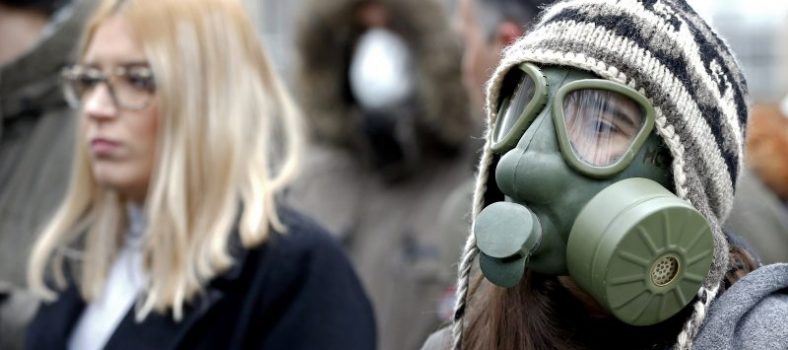Last March, the Italian Society of Environmental Medicine (SIMA) published a position paper on the possible relationship between atmospheric particulate matter and the dramatic effects of the coronavirus COVID-19.
Several publications and reports followed increasingly supporting this hypothesis. Today, a new preprint publication by SIMA adds an important piece to the puzzle pointing out particulate pollution as a cofactor in the extremely high Italian COVID-19 death rate.
Particulate pollution (PM2.5 in particular) would act as a facilitator for this epidemic in two ways: a direct effect, damaging health and impairing the immune system, and an indirect one, acting as a carrier of the virus.
Particulate matter is a notorious cause of pollution-related premature deaths. Italy is at the top of European statistics with 80,000 deaths per year due to respiratory and cardiovascular diseases related to pollutants such as nitrogen oxides, ozone and particulate matter. Those numbers are mainly concentrated in the Po Valley in northern Italy, the area most affected by COVID-19.
The indirect effect comes from particulate matter acting as a carrier for the virus. This hypothesis started a strong debate in the scientific community and is now under consideration by different research groups. Moreover, a recent publication in The New England Journal of Medicine concluded that “aerosol and fomite transmission of SARS-CoV-2 is plausible since the virus can remain viable and infectious in aerosols for hours and on surfaces up to days.”
Today SIMA confirmed the hypothesis and claimed that coronavirus SARS-Cov-2 has been found in particulate matter samples.
Professor Alessandro Miani, president of Sima, announced that 34 particulate samples obtained from industrial sites in the province of Bergamo were analyzed for a continuous period of 3 weeks, from 21 February to 13 March. The presence of the virus was verified in at least 8 of the 22 days examined and positive results were confirmed on 12 different samples.
This suggests that, in conditions of atmospheric stability and high particulate matter concentrations, common in the Po Valley, the infected micro-droplets containing the SARS-CoV-2 coronavirus could create clusters with outdoor particulate and enhance the persistence of the virus in the atmosphere.
Therefore, potentially infected saliva droplets could reach distances of even 7 or 10 meters facilitating contagion.
The results of this study are crucial to reducing contagion risks in the imminent so-called phase two, but also in the probable next seasonal waves of the virus.
Pollution rates, combined with weather conditions (that may favour the accumulation of pollutants) can be used to estimate the evolution of infection spread, thus allowing for timely measures of mitigation over critical regions. For example, enforcing protective masks or limiting the circulation of those most at risk. Measures that could be recommended even without the coronavirus, given the high rate of air pollution.
Furthermore, it becomes even more essential to lower particulate matter emissions, as well as other pollutants, to limit the risk of favouring the potential spread of coronavirus.
This last aspect is very important, especially in the Po Valley, where peculiar geographical and climatic conditions often create perfect conditions for the stagnation of polluting substances.
Those results should be taken as a warning for a greater commitment to transport decarbonisation. Electric cars, vans and buses are already a viable alternative. Even with higher upfront costs they often offer equal or lower total maintenance costs (TCO – includes fuel, insurance, maintenance, repairs, service etc.) than fossil vehicles. It is also important to lower household heating pollution promoting energy efficiency and thermal insulation of buildings.
Last but not least, more attention should be cast on intensive agriculture and livestock. In northern Italy, the 4 regions of the Po Valley host over 85% of pigs and over 2/3 of all national cattle. Such a density of farmed animals represents the weight equivalent of 50 million humans. Animal slurry from farms is widely spread on agricultural fields. A practice leading to ammonia emissions which, combined with nitrogen oxides forms ammonium salts and contributes to up to 50% of fine particulate matter formation.




